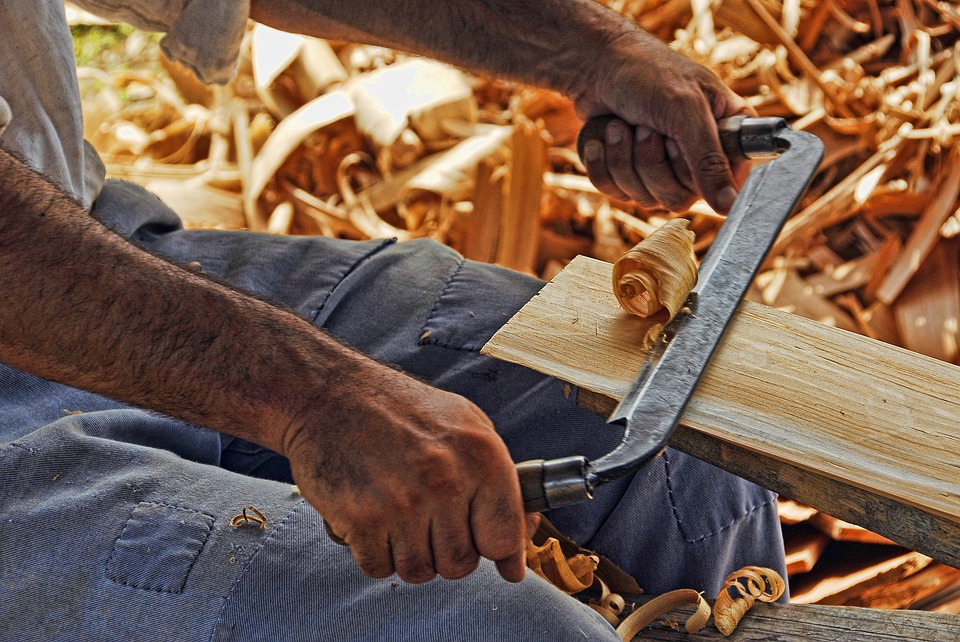
Woodworking can be amazingly rewarding and fun. The end result can be useful, functional works of art that one can be proud of and even share with others. The simple fact is that woodworking is a significant life skill that can pay dividends in a variety of ways.
While the world is full of an increasingly wide array of building and construction materials, it still plays a central role in our lives. In short, woodworking has a lot to offer, but that doesn’t mean that there are no safety concerns. Many safety concerns are obvious, but other woodworking safety concerns are less apparent and can lead to health problems and even disaster.
In this article, we will dive in and explore a few of the more overlooked hazards associated with woodworking. Luckily, these hazards have easy fixes and workarounds.
Hazard 1 – Danger to the Eyes

You’re unlikely to forget the importance of protecting your hands from saws, for example, while woodworking. But eye protection can be a different story. One of reasons that you should always wear protective eyewear is that it is a good habit to develop. It may seem silly to use eye protection with simple and quick jobs, but freak accidents have earned their name.
Simply stated, you never know when a strange twist of fate can cause wood fragments toward your eyes. Additionally, when you get into the habit of always wearing protective eyewear, you’ll never have to worry about forgetting to wear protective glasses or goggles during a more dangerous part of your woodworking.
Protecting your eyes might seem obvious to some experienced woodworkers, but unfortunately it is an area many newbies really do overlook.
Hazard 2 – Avoid Chemical Exposure from Glues, Varnishes and Paints

Woodworking is usually about much more than simply working with wood. Most woodworkers at some stage or another are also likely to work with a range of glues, varnishes, paints, strippers and other chemical agents. These chemical agents can be dangerous in a range of ways. Handling certain chemicals without gloves can be dangerous, and that means that some woodworking projects can require special gloves, such as rubberized gloves.
Chemicals also mean chemical fumes. Woodworkers need well ventilated spaces for several reasons. Many woodworkers realize that they need proper ventilation to keep from inhaling wood dust. But many people overlook the need for ventilation associated with chemical fumes.
Investing in an air purification system doesn’t have to be expensive. There are plenty of online videos for how woodworkers can construct their own woodshop fans that incorporate filters. A good workshop filter will help reduce your exposure to both wood dust and chemical fumes.
Hazard 3 – Unique Dangers of Reclaimed Wood

Stating that reclaimed wood can be dangerous might at first seem a little sensationalistic. But unfortunately there are some real dangers with some reclaimed wood. Reclaimed wood isn’t like working with the kind of wood that many woodworkers have grown accustomed to using.
The majority of woodworkers work with new growth wood. Since this more common type of wood comes from younger trees, it is much softer than most reclaimed wood. Reclaimed wood often comes from old growth trees, and this means it is much tougher as a result. Working with reclaimed wood is different as you need to plan to encounter more resistance when cutting.
Another key hazard with reclaimed wood is that some reclaimed wood, if it was previously painted, can contain lead paint. You should never assume that a piece of painted reclaimed wood is safe to use. At bare minimum, you should use a lead testing kit to verify that the wood does not have lead paint. Stripping wood with lead paint can release dangerous and toxic lead into your environment.

There is zero safe level of lead. Always remember that lead is extremely dangerous for children to be around. So if you have children that want to assist with your projects, you are best off saying no if your reclaimed wood has any old paint on it. Stripping wood with lead paint with a sander will spread the lead paint into small particles, essentially spreading it out into your environment and contaminating your surroundings. Once lead is particularized it can be extremely dangerous, as it easy to inhale.
The bottom line is that unless you are an expert with lead safety protocols and procedures you should steer clear of working with lead painted wood. It simply isn’t worth the risk.
Hazard 4 – The Untidy Workshop

Saw dust and wood burns quickly. Now, while this fact might be obvious, it is easy to let wood pieces, fragments and sawdust pile up. But this is a very bad idea. If you also have chemicals and paints in your workshop, then your excess wood can be all the more dangerous.
Removing extra wood and sawdust from your shop and keeping open flames far away are two woodworking essentials. The dangers of sawdust are often completely overlooked. Likewise, any oily areas that you have lying around your shop may be a very serious fire hazard. A fire in a woodworking shop can spread very quickly. Bag up and properly dispose of your sawdust and other excess word on a project by project basis. Your woodworking shop should be clean, neat and free of open flames and potentially dangerous heaters at all times.
Not every woodworking shop hazard is obvious, and also every woodworking shop is different. Factors including the layout of your specific space, as well as your regional climate and ventilation (and many other issues too) all combine to make each woodworking safety environment unique and different from the next. The most important shop safety tip to follow is to constantly access and reevaluate the safety of your shop. Once an accident has taken place, it is too late.